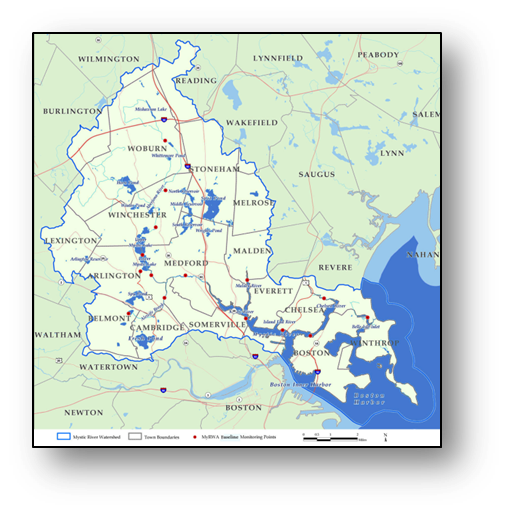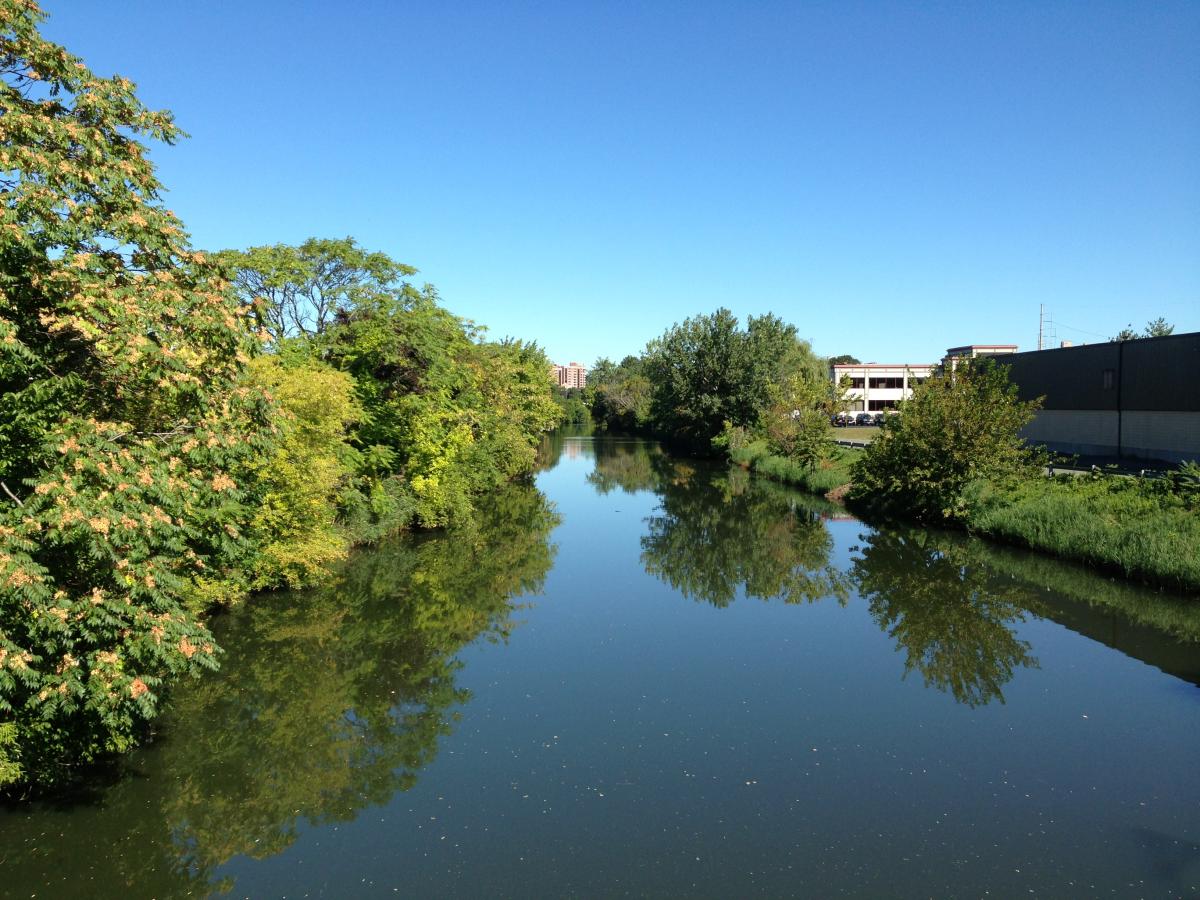Water Quality and Health
The MIT CEHS COE2C collaborates with the Mystic River Watershed Association (MyRWA).
The Mystic River Watershed Association is an organization established in 1972 to protect and restore the Mystic River. The Mystic River is one of three rivers that empties into the Boston Harbor and its watershed is the most urban and densely populated watersheds in Massachusetts. Comprising 1% of the state by landmass, the Mystic watershed has three Superfund sites and is home to several Environmental Justice communities. The watershed also includes more than a half million residents in 22 towns in Massachusetts.

Mystic River Watershed includes Boston Logan International Airport, a commercial seaport, and 22 towns.
The Mystic River became highly industrialized in the early 1900s. The river still carries the legacy of this industrial period with known contaminates in the water and sediments. MyRWA monitors the water quality and works to improve the health of the waterway. Besides the environmental tasks it undertakes, MyRWA sponsors recreational activities to increase the public’s awareness and enjoyment of the river.
The COE2C partners with the Friends of the Malden River (FoMR) to help provide community access to the urban waterway.
The MIT CEHS COE2C Director, Dr. Kathy Vandiver, has been an active committee member of the Friends of the Malden River (FoMR), a smaller community group within MyRWA. The Malden River is a tributary of the Mystic River and it borders the towns of Medford, Malden, and Everett. The towns have all considered building a publicly accessible boat launch on their shores. However no town has undertaken this project, fearing the town’s liability should a human health risk be present. Thus, a human health risk assessment for the Malden River seems necessary before any progress can be made.
Friends of the Malden River asked for the COE2C involvement as they solicit health risk assessment proposals from several environmental companies. The CEHS toxicologists were able to help select the most cost effective proposal and attended the initial meeting with the potential firm. To further facilitate the progress on this project, the COE2C invited MIT’s Civil and Environmental Engineering Department Masters’ Program to participate. The involvement of MIT graduate students on the Malden River project now seems likely in the Fall of 2014. This could be a winning arrangement for all, for the MIT graduate students, the environmental firm, and the towns along the river.

Photo by David Mussina
Friends of the Malden River meet monthly, and in July 2014 they met at the Tri-Cap Building in Malden. The agenda included making plans for the Malden River Festival in Sept. The first printing of Friends of the Malden River brochure was shared in preparation for the festival.
Much of the Malden River remains inaccessible and unseen by the public.


